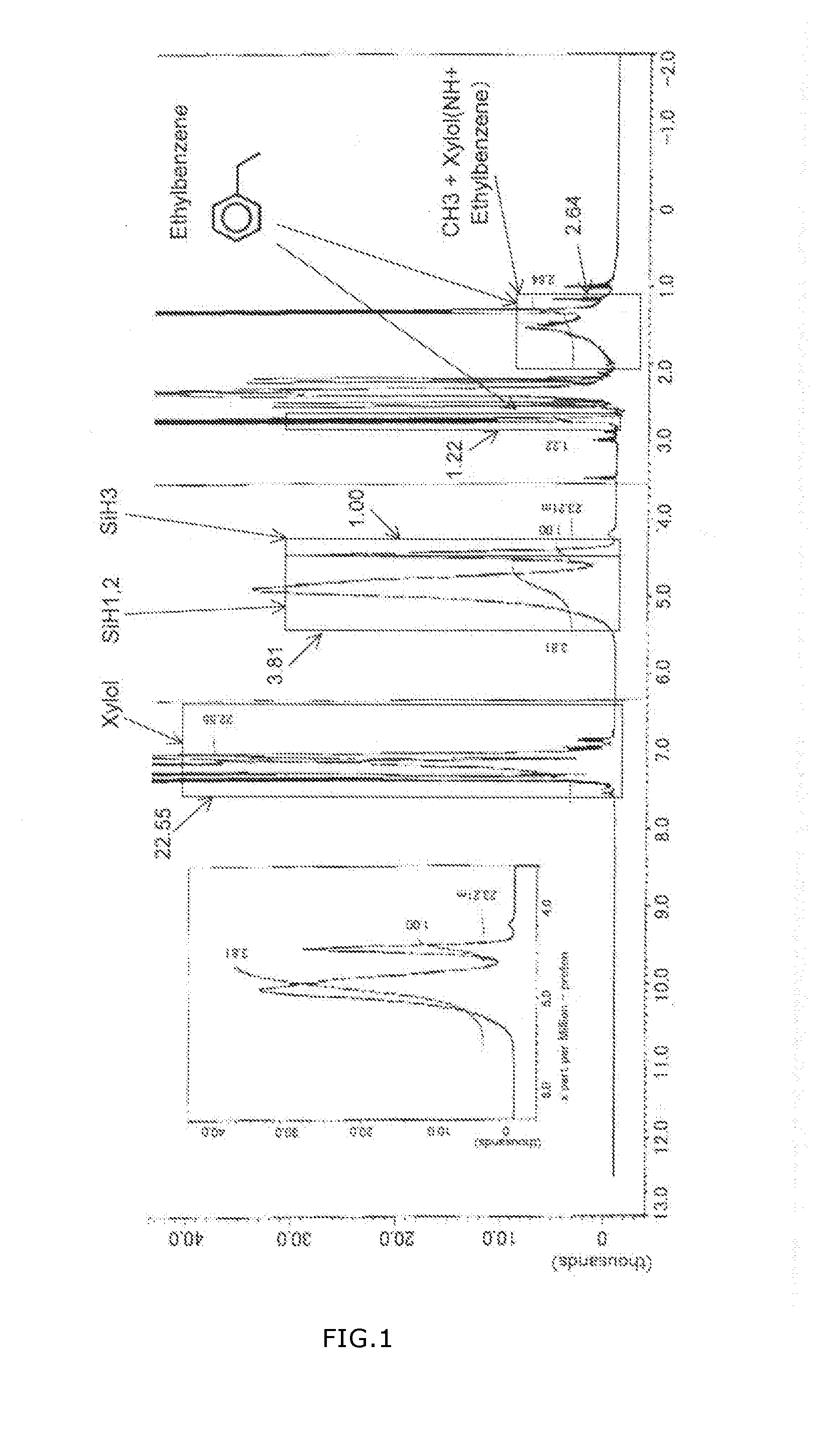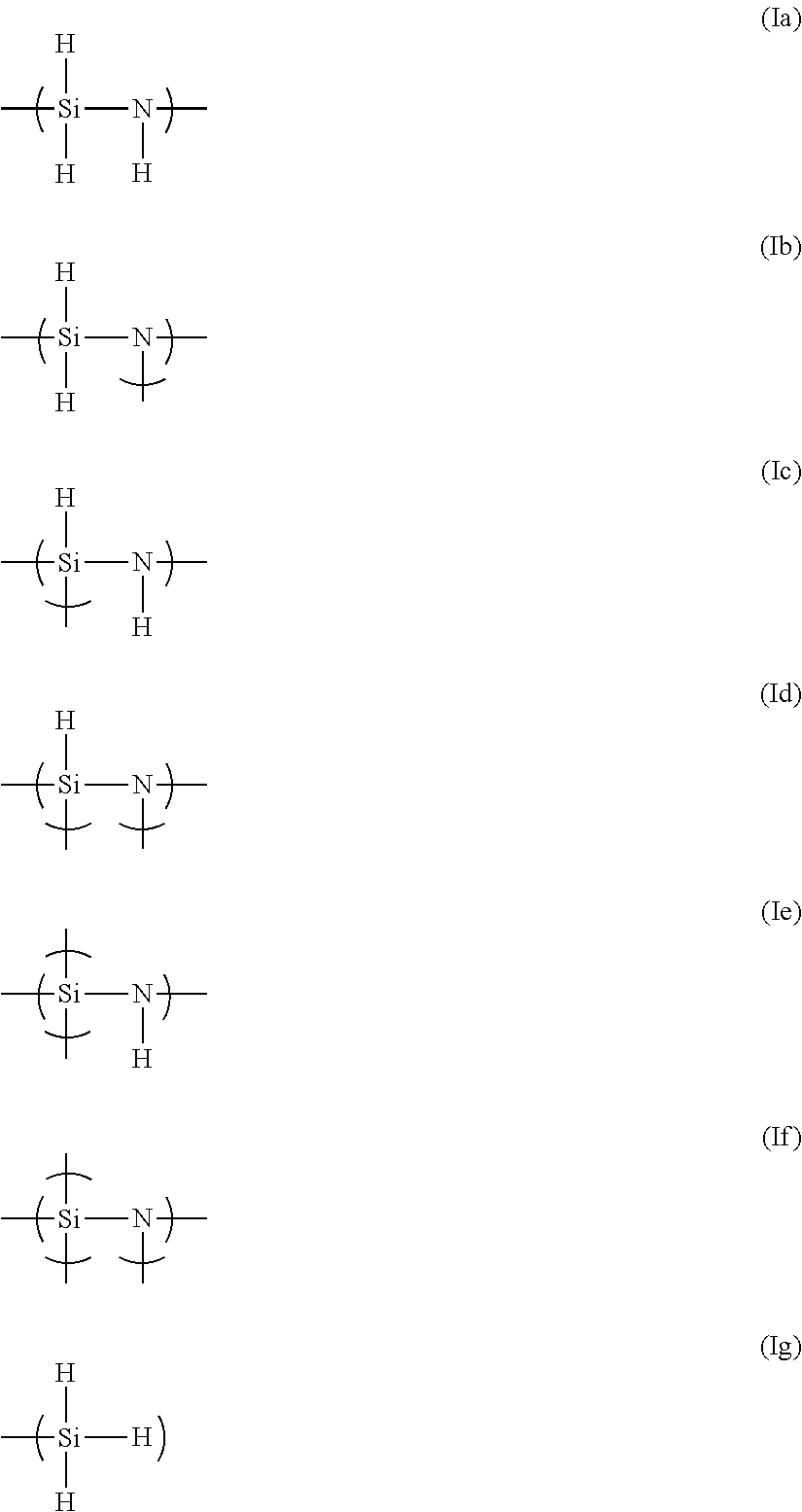Perhydropolysilazane, composition containing same, and method for forming silica film using same
a technology of perhydropolysilazane and composition, which is applied in the direction of coatings, nitrogen and non-metal compounds, electrical devices, etc., can solve the problems of increasing the occurrence of defects in the siliceous film constituting the trench, the reduction of the yield rate of electronic devices is becoming serious, and the inability to achieve sufficient reduction of defects by these methods, etc., to achieve small shrinkage during curing, less defects, and high stability against oxidation
- Summary
- Abstract
- Description
- Claims
- Application Information
AI Technical Summary
Benefits of technology
Problems solved by technology
Method used
Image
Examples
synthesis example 1
Synthesis of Intermediate (A)
[0070]The inside of a 10 L reaction vessel, equipped with a cooling condenser, a mechanical stirrer and a temperature controller, was replaced with dry nitrogen and thereafter 7,500 mL of dry pyridine was put into the reaction vessel, which was then cooled down to −3° C. Then, 500 g of dichlorosilane was added to produce an each color solid adduct (SiH2Cl2.2C5H5N). Upon confirming that the reaction mixture became −3° C. or less, 350 g of ammonia was slowly blown into the reaction mixture while stirring. Subsequently, stirring was continued for 30 minutes, and then dry nitrogen was blown into the liquid layer for 30 minutes to remove excess ammonia. The resulting slurry product was subjected to pressure filtration using 0.2 μm filter made of Teflon (registered trademark) under dry nitrogen atmosphere to obtain 6,000 ml of filtrate. Pyridine was distilled off using an evaporator to obtain a xylol solution of the inorganic polysilazane having 38.9% concentr...
example 1
[0071]The inside of a 10 L reaction vessel, equipped with a cooling condenser, a mechanical stirrer and a temperature controller, was replaced with dry nitrogen, and thereafter 4680 g of dry pyridine, 151 g of dry xylol and 1673 g of the 38.9% Intermediate (A) obtained in Comparative Example 1 were introduced. Then, they were stirred to be made uniform while bubbling nitrogen gas at 0.5 NL / min. Subsequently, a reforming reaction was performed at 110° C. for 9.6 hours to obtain a PHPS of Example 1.
[0072]Followings of the resulting PHPS were shown in Table 2:[0073](1) weight-average molecular weight Mw,[0074](2) weight-average molecular weight Mw / number-average molecular weight Mn,[0075](3) relative value of total amount of SiH2 and SiH1 to the aromatic ring hydrogen in xylol (R(SiH1,2)),[0076](4) relative value of the amount of NH to the aromatic ring hydrogens in xylol (R(NH)),[0077](5) relative value of the amount of SiH3 to the aromatic ring hydrogens in xylol (R(SiH3)),[0078](6) ...
example 2
[0081]Subject to the synthesis according to Example 1 except changing the reforming reaction time to 10.4 hours, a structurally different PHPS was synthesized.
[0082]Characteristic values of the resulting PHPS were shown in Table 2.
PUM
| Property | Measurement | Unit |
|---|---|---|
| Percent by mass | aaaaa | aaaaa |
| Percent by mass | aaaaa | aaaaa |
| Mass | aaaaa | aaaaa |
Abstract
Description
Claims
Application Information
 Login to View More
Login to View More - R&D
- Intellectual Property
- Life Sciences
- Materials
- Tech Scout
- Unparalleled Data Quality
- Higher Quality Content
- 60% Fewer Hallucinations
Browse by: Latest US Patents, China's latest patents, Technical Efficacy Thesaurus, Application Domain, Technology Topic, Popular Technical Reports.
© 2025 PatSnap. All rights reserved.Legal|Privacy policy|Modern Slavery Act Transparency Statement|Sitemap|About US| Contact US: help@patsnap.com



